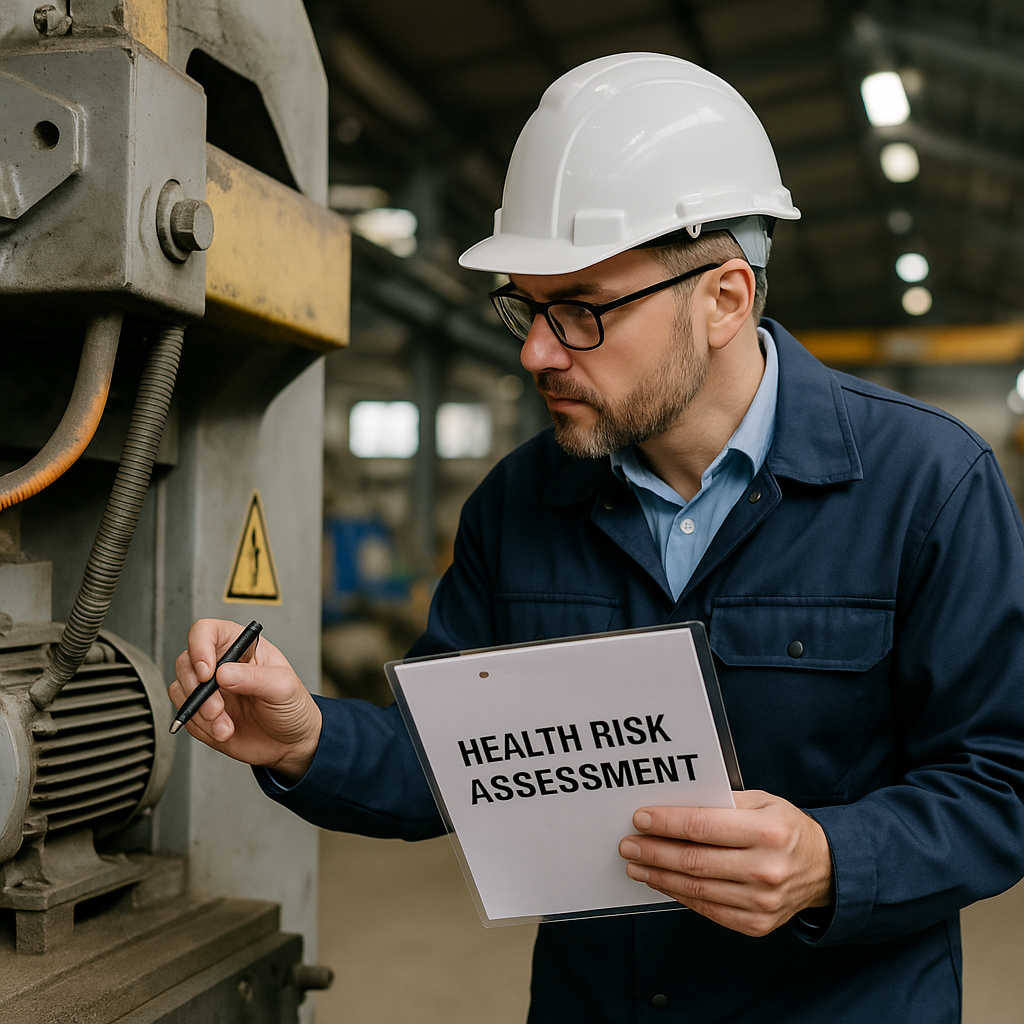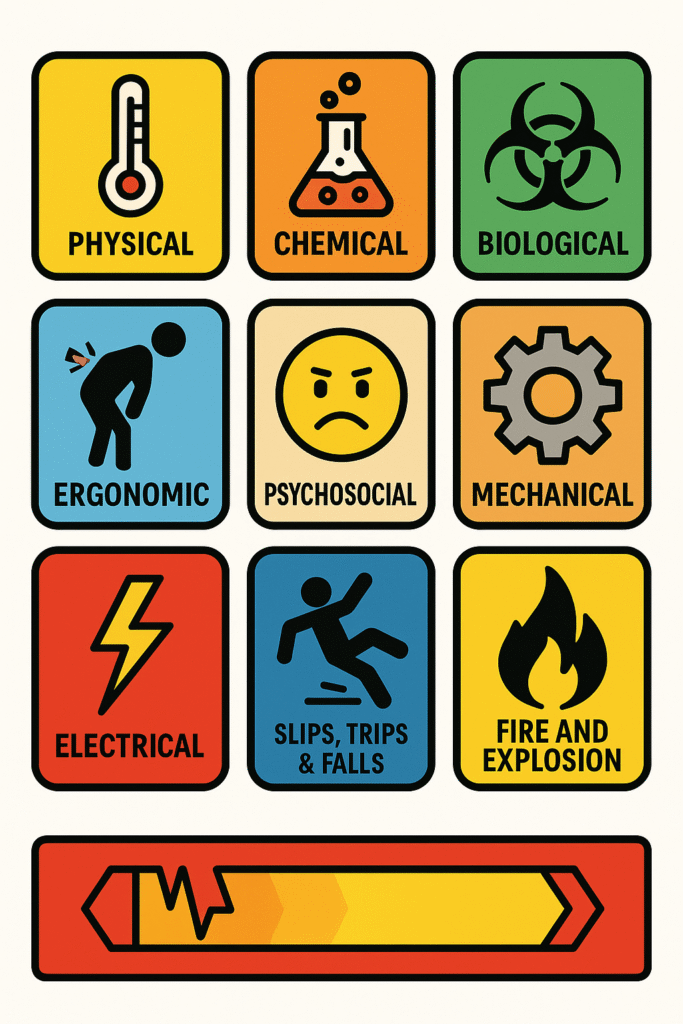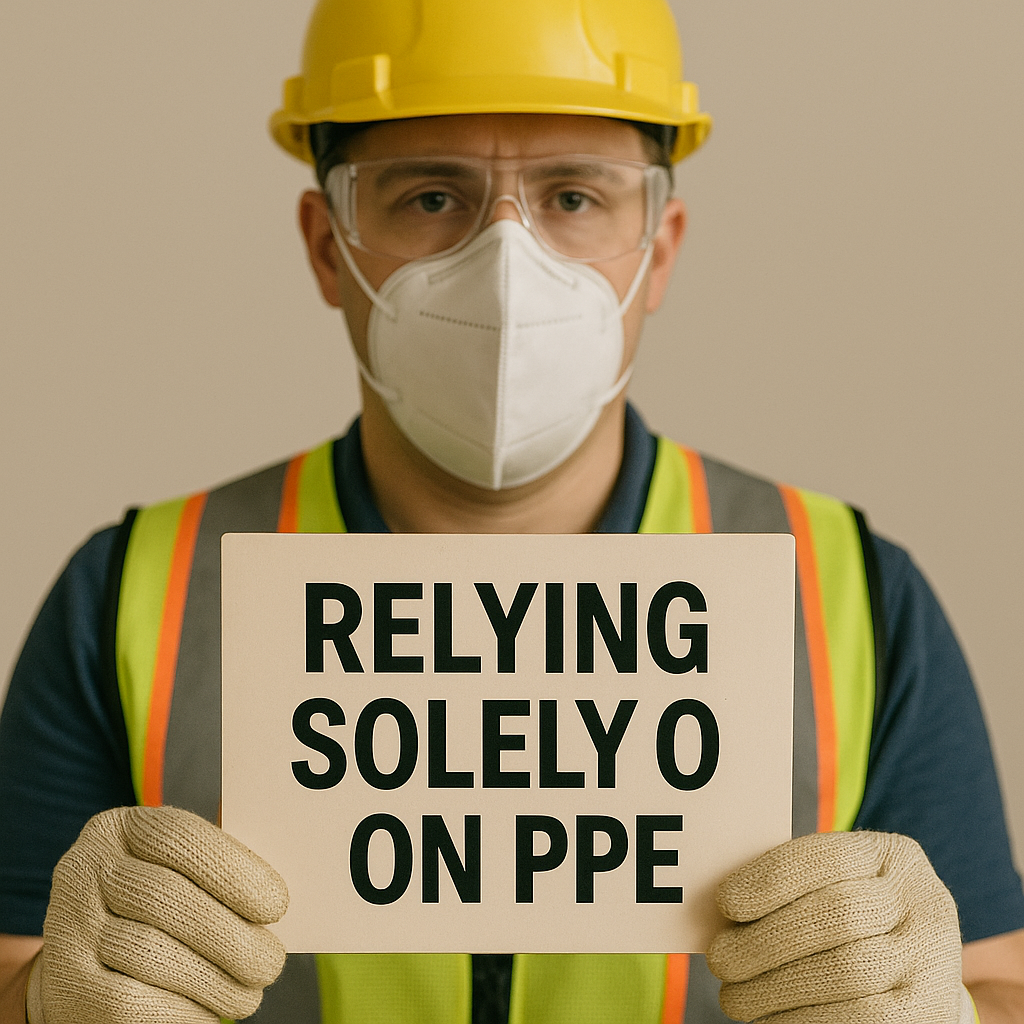How to conduct an effective workplace health risk assessment is one of the most vital questions for any organization serious about protecting employee wellbeing, reducing absenteeism, and ensuring regulatory compliance.

From identifying hazards to evaluating control measures, a well-conducted health risk assessment forms the foundation of a proactive occupational health strategy.
In this guide, we’ll answer the key questions surrounding how to conduct an effective workplace health risk assessment, including its purpose, legal requirements, and practical steps—using real-world insights and expert recommendations.
- What Is a Workplace Health Risk Assessment?
- Why Is It Important to Conduct a Health Risk Assessment?
- Who Should Conduct the Health Risk Assessment?
- What Types of Hazards Should Be Considered?
- How to Conduct an Effective Workplace Health Risk Assessment: Step-by-Step
- 🧾 What Are the Legal Requirements?
- How Often Should Health Risk Assessments Be Done?
- What Are the Common Mistakes to Avoid?
- How to Integrate Health Risk Assessments into a Broader OHSE System?
- Conclusion: How to Conduct an Effective Workplace Health Risk Assessment
What Is a Workplace Health Risk Assessment?
A workplace health risk assessment is a structured process to identify, evaluate, and control health-related hazards in the workplace.
While safety assessments focus on accidents and injuries, health risk assessments examine physical, chemical, biological, ergonomic, and psychosocial factors that can impact worker health over time.
This process includes:
- Identifying health hazards (e.g., noise, stress, toxins)
- Assessing the risk level (likelihood and severity)
- Deciding on control measures
- Monitoring effectiveness over time
Why Is It Important to Conduct a Health Risk Assessment?

Understanding why you need to conduct a workplace health risk assessment is critical:
- 🔍 Identify Hidden Hazards: Occupational diseases often develop silently. Without assessment, exposure can go unnoticed.
- ⚖️ Legal Compliance: Regulatory bodies like OSHA, CCOHS, and HSE require risk assessments to be documented and reviewed.
- 💼 Improve Productivity: Healthy workers are more engaged, productive, and less prone to time off.
- 🛡️ Prevent Long-Term Illnesses: Chronic exposure to noise, stress, or chemicals can lead to irreversible conditions.
- 💰 Save Costs: Prevention is cheaper than compensation, rehabilitation, or legal settlements.
According to CCOHS, proactive risk assessments are essential for workplace health program success.
Who Should Conduct the Health Risk Assessment?
A competent person or team should conduct the assessment—ideally involving:
- Occupational health and safety professionals
- Departmental supervisors and managers
- Employees familiar with specific tasks
- Health and safety committee representatives
For high-risk environments, external occupational hygienists or consultants may be needed.
What Types of Hazards Should Be Considered?

A complete workplace health risk assessment should cover:
1. Physical Hazards
- Noise and vibration
- Temperature extremes
- Radiation
2. Chemical Hazards
- Cleaning agents
- Solvents and fumes
- Gases and dusts (e.g., silica, asbestos)
3. Biological Hazards
- Viruses and bacteria (especially in healthcare or food)
- Mould or animal waste exposure
4. Ergonomic Hazards
- Poor posture
- Repetitive tasks
- Awkward lifting
5. Psychosocial Hazards
- Work-related stress
- Bullying or harassment
- Poor work-life balance
How to Conduct an Effective Workplace Health Risk Assessment: Step-by-Step
Here’s a breakdown of how to conduct an effective workplace health risk assessment:
Step 1: Plan the Assessment
Determine:
- The scope (entire facility vs. specific processes)
- Who will lead it
- Timeline and documentation method
This helps ensure consistency and compliance.
Step 2: Identify Health Hazards
Use a combination of:
- Workplace walkthroughs
- Employee interviews
- Reviewing incident/illness logs
- Material Safety Data Sheets (MSDS)
- Noise, air, and exposure level testing
Tip: Tools like NIOSH’s Hierarchy of Controls help prioritize risks.
Step 3: Evaluate the Risks
Assess:
- Likelihood of harm (rare to frequent)
- Severity of health effects (minor irritation to permanent disability)
Create a risk matrix like this:
| Risk Level | Likelihood | Severity | Action Needed |
|---|---|---|---|
| High | Likely | Major illness | Immediate control |
| Medium | Possible | Moderate harm | Planned action |
| Low | Unlikely | Minor symptoms | Monitor |
Step 4: Decide on Control Measures
Apply the Hierarchy of Controls:
- Eliminate the hazard (e.g., switch to non-toxic chemicals)
- Substitute with less harmful options
- Engineer controls (e.g., ventilation systems)
- Administrative controls (e.g., rotate jobs to reduce exposure)
- PPE – Personal Protective Equipment (last resort)
Remember, PPE is not a standalone solution—it complements other controls.
Step 5: Document the Findings
Document:
- Identified hazards
- Risk ratings
- Chosen control methods
- Responsible persons
- Timelines for implementation
Tip: Use software or checklists to streamline the process.
Step 6: Implement and Communicate
- Inform all affected employees
- Provide training on new controls
- Ensure proper use of PPE and equipment
- Encourage reporting of emerging risks
Communication ensures buy-in and accountability.
Step 7: Monitor and Review
- Schedule regular reviews (e.g., annually)
- Reassess after incidents or major changes
- Track control effectiveness using health surveillance data
Use KPIs such as absenteeism, reported symptoms, and exposure test results.
🧾 What Are the Legal Requirements?
In Canada, under provincial and federal OH&S laws, employers are legally required to assess and control workplace health hazards.
For example:
- Canada Labour Code Part II mandates employers to identify and assess health risks.
- Occupational Health and Safety Act (Ontario) requires hazard assessments and protective measures.
Similarly, OSHA in the U.S. and HSE in the UK impose legal obligations for health hazard assessments and documentation.
See OHSE.ca for Canada-specific tools and templates.
How Often Should Health Risk Assessments Be Done?
- Upon initial job design or startup
- After any changes to equipment, substances, or processes
- Following incidents or near misses
- On a scheduled basis (e.g., annually)
Regular assessments ensure evolving risks are caught early.
What Are the Common Mistakes to Avoid?
Avoid these pitfalls:

- Only focusing on safety hazards, ignoring long-term health risks
- Using generic assessments that don’t reflect real conditions
- Failing to involve workers in hazard identification
- Relying solely on PPE
- Not reviewing assessments after changes or incidents
How to Integrate Health Risk Assessments into a Broader OHSE System?
To be truly effective, health risk assessments should tie into your overall Occupational Health, Safety, and Environment (OHSE) program:
- Align findings with training plans, emergency response, and return-to-work strategies
- Feed data into health surveillance programs
- Use digital tools to integrate with incident reporting and inspections
This integration boosts compliance and efficiency.
Conclusion: How to Conduct an Effective Workplace Health Risk Assessment
Learning how to conduct an effective workplace health risk assessment empowers organizations to protect their workforce, comply with regulations, and enhance productivity. From planning and hazard identification to risk evaluation and control, every step matters.
Remember, health hazards may not cause immediate harm—but their effects are often more devastating in the long run. A proactive, structured, and regularly reviewed assessment is your best line of defense.

No comments yet